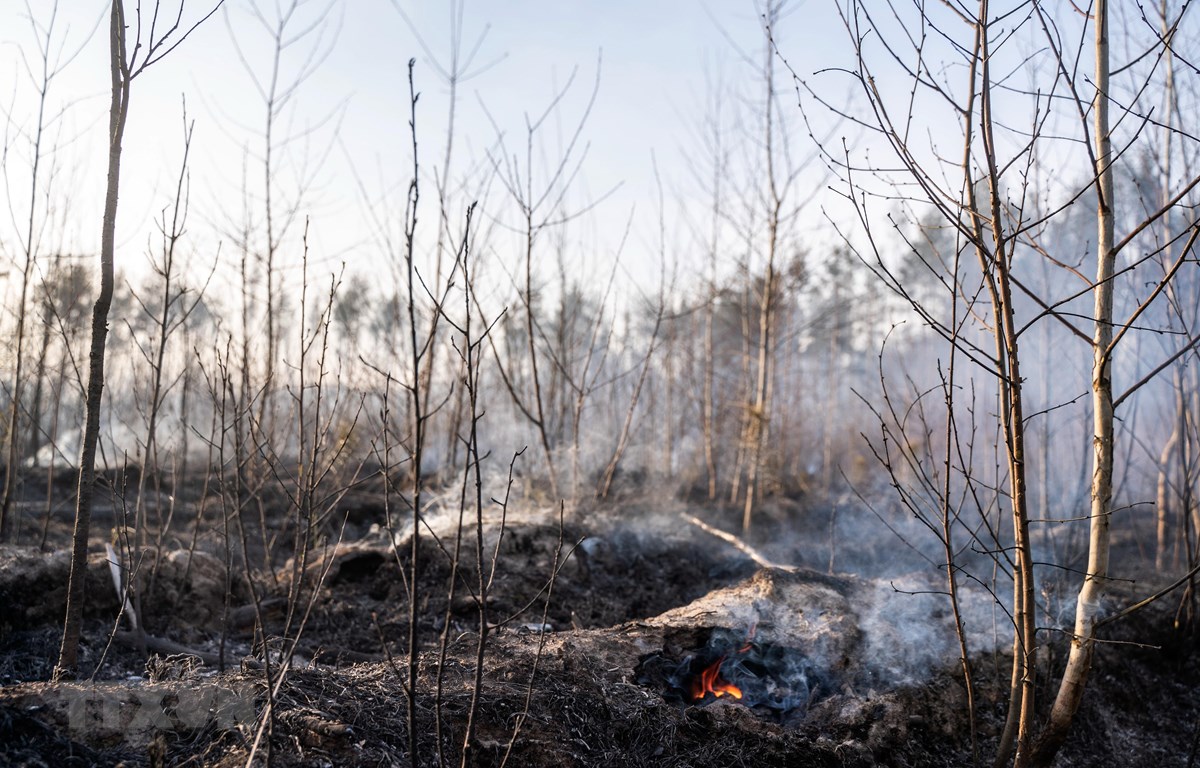
Trees burned in a forest fire near the Chernobyl nuclear power plant, Ukraine on April 12. (Photo: AFP / VNA)
Dozens of wildfires, including the one near the Chernobyl nuclear power plant, caused the air in Ukraine's capital Kiev on April 17 to be the most polluted in the world.
According to Swiss air quality monitoring company IQAir, among the major cities in the world, the capital Kiev has the highest level of pollution.
Forest fires near the Chernobyl nuclear power plant have created a dense layer of dust and smoke covering the capital Kiev and the Kiev region. Ukrainian officials said it was fortunate that the smog did not contain chemicals and the radiation concentration was within normal limits.
Ukraine's Ministry of Health recommends that this smog can cause headaches, coughing, shortness of breath, itchy eyes, and allergic conditions. Therefore, people should stay inside and close the windows.
On April 3, a wildfire broke out in the western part of the restricted area near the long-dead Chernobyl nuclear power plant, and spread to nearby forests despite efforts of the fire fighting force.
Local television broadcast flames that destroyed many cemeteries, forests, wetlands and at least 12 villages. On April 12, the fire drew closer to the Chernobyl nuclear power plant.
A video posted on the Internet shows many animals and cattle fleeing through the fields; Firefighting helicopters dumped tons of water into the area covered by fire ...
Environmentalists have warned that fires near the world's worst nuclear accident in 1986 were at risk of radiation.
However, the Ukrainian authorities insisted that despite a short-term increase in the radioactive isotope Caesium-137 in the Kiev region of the south of the plant, the radiation concentration was still within the permitted level and There is no need to implement protective measures.
On April 14, Ukrainian authorities said that the fire was basically under control. Police have identified a 27-year-old local resident suspected of causing the fire.
The April 1986 incident at this nuclear power plant, in which the plant's fourth reactor exploded, caused a large area of Europe serious radioactive pollution, affecting millions of people. in Ukraine, Belarus, Russia, the Baltic States and some other countries.
This is considered the worst nuclear incident in the world. After this incident, people are not allowed to live within 30 km around this power plant. The remaining three reactors in Chernobyl continue to produce electricity until the plant is officially shut down in 2000./.